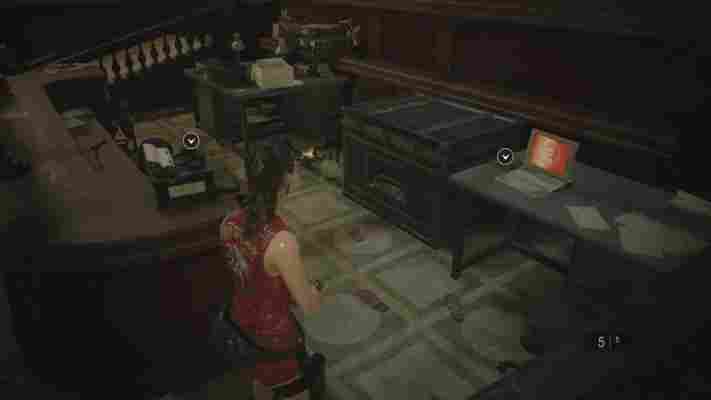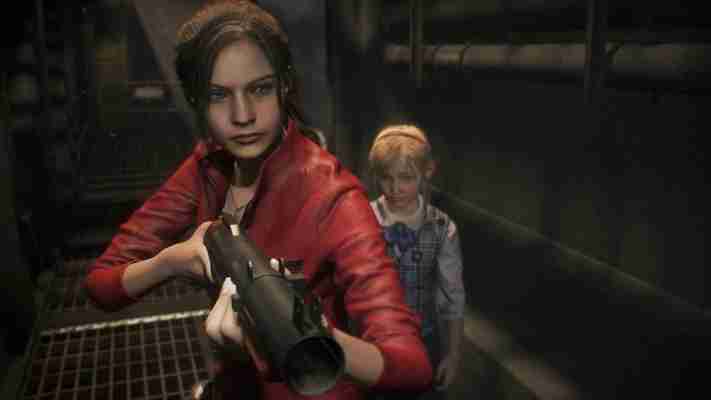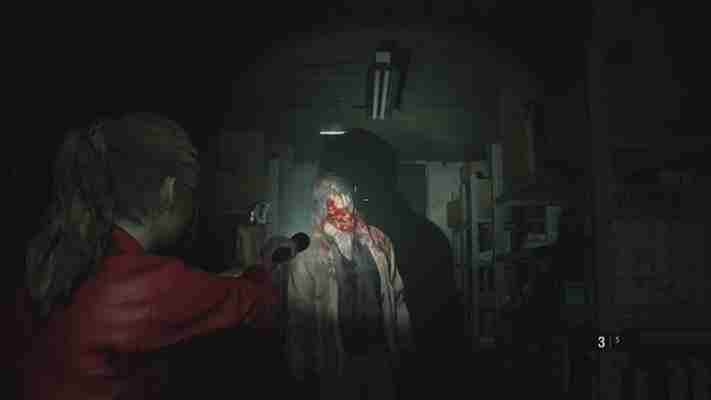Raccoon City: once a bustling Midwestern metropolis, now a hellish nightmare teeming with zombie hordes and other terrifying creatures created by the sinister Umbrella Corporation. As a player, you’ll take control of rookie cop Leon S. Kennedy or student Claire Redfield as they fight to escape the city. Whether you’re a series veteran or a new player, Resident Evil 2 offers a unique survival horror experience. You’ll need to do more than simply shoot zombies if you hope to make it out alive. In this guide, we’ll teach you the tips and tricks you need to know to keep you from becoming zombie food.
The Complete Resident Evil 2 Survival Guide
Manage your inventory

As with other games in the Resident Evil series, Resident Evil 2 uses a limited inventory system. This particular format was introduced with Resident Evil 7. It depicts the inventory as a group of small squares, with most items taking up a single square and larger items eating up two squares. Once your inventory is full, you won’t be able to pick up any more items. You then have two options. Discarding an item can free up inventory space, but that item is permanently lost, and you won’t be able pick it back up. Retaining your supplies is important, as you don’t want to get caught in a boss battle without the ammo and healing items you need. You’ll want to avoid discarding items at all costs.
If you want to lose items without discarding them, you’ll have to take a trip to an Item Box. Usually found in safe rooms, Item Boxes such as the ones pictured above allow you to store an infinite amount of items with no penalty. The catch is, you’ll have to make a trip to the Item Box if you need to retrieve an item from it, so it’s advisable to always know the location of the closest Item Box. You’ll need to manage your inventory space carefully to avoid being forced to discard important items or make avoidable trips to a safe room.

Items in Resident Evil 2 fall under several distinct categories: Weapons, Healing Items, and Key Items. You’ll want to make sure you have a good balance of all three types in your inventory at all times.
Weapons
Weapons are an absolute necessity to survive in Raccoon City. Usually, weapons such as small handguns only take up a single inventory slot, but will start to become bulkier as more modifications are found and added. You’ll need to decide if taking up that inventory space is worth having a more powerful gun. You’ll also need to keep in mind that ammo also eats up inventory space, so it’s advisable to only keep a few weapons on your person at any one time.
Backup Weapons, such as grenades and knives, can also be found. If a zombie grapples you, you can use a backup weapon to fend off the zombie and avoid taking damage.
Healing Items
Healing Items encompass herbs and First Aid Sprays.
Herbs can be mixed in any combination, with a mix of all three herbs being the best healing item in the game.
Key Items
Key Items are items necessary to solve the many puzzles located throughout the game. Oftentimes, these puzzles have multiple stages and completing them is necessary to proceed, so you’ll want to make sure you save ample room for key items instead of solely loading up on weapons and herbs.
As a general rule of thumb, a good inventory composition consists of one handgun, one more powerful secondary weapon, ammo for both, a healing item, and one backup weapon. The rest of the space should be devoted to Key Items. Feeling a little cramped? You can also find Hip Pouches hidden throughout the game that can upgrade your max inventory space.
More about Resident Evil 2
RE2: The 4th Survivor guide ►
RE2: All lock and safe combos ►
RE2: All weapons and how to find them ►
RE2: How to survive the Tyrant ►
Fight or flight

Zombies in Resident Evil 2 are more dangerous than they appear. Though generally slow-moving, they’re capable of absorbing massive amounts of damage before going down for good. Even headshots aren’t always fatal ; it usually takes several to kill even an average zombie. As such, you’ll need to make a choice every time you run into a zombie: fight or flight?
There are distinct advantages to both camps. Alone, zombies don’t pose too much of a threat, but when encountered in groups, they can easily overwhelm and take you down. Trying to take down a group of zombies can also chew up a lot of valuable ammo. In this case, you may want to run and avoid an encounter, but you also risk having to deal with those zombies again if you need to retrace your steps through a particular area.
If you do decide to take on a zombie, there are several things to keep in mind. First, headshots will do the most damage and also temporarily stun zombies. If you need to get past a zombie blocking your path, consider snapping off a quick headshot and running past. Headshots also have a small chance of scoring criticals. A critical hit will blow a zombie’s head clean off and kill it instantly. That said, headshots can be hard to land while under pressure, so you’ll need to think carefully about if trying to nail a headshot is worth it.
Alternately, you can also aim for a zombie’s limbs. Legs and arms can be blown off, hindering a zombies ability to attack or grapple you. Like a headshot, a few quick shots to the leg will stagger a zombie and let you slip past. The goal of most encounters in Resident Evil 2 should be to end them quickly and conserve ammo. Whether this means quickly putting an end to a zombie or avoiding it entirely is up to you.
Know your map
The hallways of the Raccoon City Police Department and the tunnels beneath it are essentially a maze. Getting to know your map, and how to use it effectively, will make your life a lot easier.
A typical map readout will look like the image above. Rooms will be highlighted with one of two colors: red or blue. Rooms highlighted in red haven’t been fully searched. If you see a room highlighted in red, that means you still have items left to find in that particular room. It won’t tell you what those items are or where to find them unless you actually have seen the item in question. If you’ve seen an item, its specific location will be marked on the map, which is handy if you need to leave an area and return later for whatever reason. If a room has been completely searched, it will turn blue. This generally means you can shift your focus to other areas.
Locked doors are also indicated on the map in red , and doors that can be unlocked using specific keys or items are denoted by an icon of the item associated with that door. For example, doors that can be unlocked using the Spade Key are noted with a Spade Icon, and so on. Any locked doors or other areas associated with your current objective are marked with an exclamation point icon.
If you find yourself missing a certain item or are stuck and aren’t sure how to progress, it’s always a safe bet to check your map. You’ll see which rooms you might need to search again and see doors you can potentially open. It’s also good practice to start to memorize the general map layout, so you can know where you are in case the Tyrant starts chasing you down or if you need to find your way to an Item Box.
Though seemingly basic, these tips are essential for making it through the horrors of Raccoon City unscathed. Mastering these basics is what makes the difference between a genuine survivor and just another corpse.
More about Resident Evil
5 must-play Resident Evil games ►
Resident Evil 2: Everything we know so far ►
Resident Evil 2: Are the Collector’s Editions worth it? ►
10 most terrifying survival horror games ►
